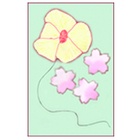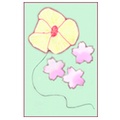Undokai (Sports Day) is an annual event that schools throughout Japan—elementary through high school—hold during the fall. Undokai combines the Japanese word undo, meaning exercise, and kai, gathering. The undokai event stems from Taiku no hi (Health and Sports Day), an official nationally recognized holiday in Japan that commemorates the 1964 Summer Olympics held in Tokyo. It is like Field Day for schools in the United States with some differences.
Field Day doesn’t commemorate anything nor is it an observed day in any American school system that recognizes health and sports, at least from what I remember of my public school education. Field Day was just a day at the end of the school year where students participated in various sports activities and relay races and teachers had a day off from teaching. Winners received first, second and third place ribbons. At the end of the school day, 2:40 pm, everyone had a popsicle and went home. Field Day in the U.S. ended in junior high school. No Field Day in high school.
When it comes to preparation, undokai at Japanese schools in the U.S. hardly resemble undokai in Japan. Elementary, junior and senior high school students in Japan go through intensive preparation with after-school practices. Regularly held classes are cancelled the week of undokai so that students can practice group dances and various other performances for the event held on Sunday. My Japanese school adopted more of the American school Field Day traditions of just showing up on the day of the event and being more concerned with winning individual points rather than working together and supporting the team.
My Japanese school undokai experience was an interesting cross between an American Field Day and a Japanese undokai. Even though it was Japanese school, everyone, except for the teachers (who were mostly women from Japan), spoke in English—the parents, the students, the principal. Properly following Japanese tradition, the entire student body was divided into two teams—red and white. Students competed in individual and group events such as running in races and doing tugs of war with the overall goal being earning the most points for the team. Individual winners and winning teams would receive a certain number of points that would contribute to the overall teams’ scores. Like undokai in Japan, the idea was for students to work together as a team and support each other in the individual events. Teamwork and camaraderie amidst competition is what is most encouraged.
My Japanese school’s undokai included the potato sack race, the three-legged race, the hold-an-egg-in-the-spoon relay race, and a treasure hunt that seemed like an Easter egg hunt without the eggs. I remember carrying a plastic bag running across an open soccer field looking for small things with Japanese kanji characters attached to them. Whoever collected the most of these things would win points individually and for the team as well as a basket of prizes that resembled something very much like an Easter basket.
For five of the eight years I attended Japanese school, I was on the white team. The other three years I was on the red team. I always wanted to be on the red team, for no reason other than that I was attracted to the color and that it contrasted well with the blue jeans and white shirt I wore. When I was on the white team, I remember asking my classmates if they would trade colors with me. My attempts always resulted in failure and being stuck on the white team. At the end of the day it didn’t matter because we had to return the red or white piece of cloth anyway. One year, when I was on the red team, I didn’t return the red cloth like I was supposed to. I kept it in a box with all of my favorite things under my bed. Today, that red piece of cloth is gone, mainly because my favorite things at 10 years old are no longer my favorite things now.
Instead of meeting at 9am for our regular class on Saturday morning, all of the students from my Japanese school would meet at a nearby park. Teachers and volunteer parents would set up for the event—a water station, prize table, orange cones. My mother would take the day off of work to pack lunch in our large picnic cooler and sit alongside the field with a family friend whose children my brother and I went to Japanese school with. In between events, kids would run to their family’s picnic spot to scarf down food and drink. I especially loved my mom’s picnic food because it would be the only time she would make all of my favorite foods together. Karaage (chicken nuggets Japanese-style), edamame (soy beans in their original form), onigiri (rice balls) with umeboshi, wakame and shiso furikake (sour plum, dried seaweed and beef stock rice seasoning) wrapped in nori (dried seaweed), and mugicha (barley tea) to wash it all down.
Japanese school undokai in the U.S. is more like the American school Field Day. Next to getting a day off from school, I went home with prizes—a popsicle from my Monday through Friday school and pens, pencils, erasers and candy from my Japanese school. Students don’t prepare anything and hardly understand the concept of teamwork. It’s all about getting the most points individually and going home with free stuff. I’d like to think that it’s just the American way.
© 2007 Victoria Kraus




